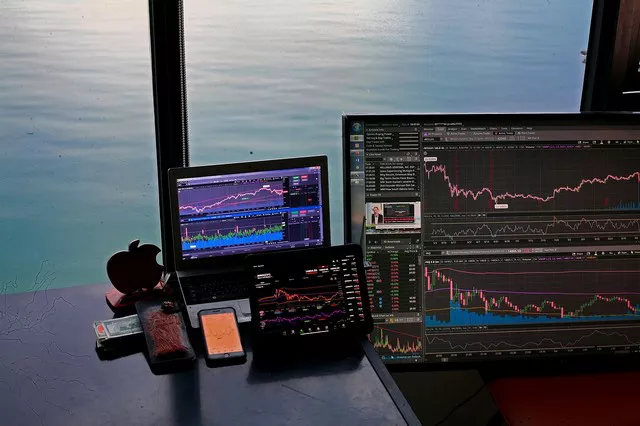Water, often referred to as the “blue gold,” is an essential resource critical to life, agriculture, industry, and the environment. As concerns over water scarcity and sustainability grow, investors are increasingly turning to water futures as a means of both mitigating risk and capitalizing on opportunities in this vital market. In this comprehensive guide, we explore the fundamentals of water futures investing, provide insights into market dynamics, discuss investment vehicles, and offer practical advice on starting and managing a water futures investment portfolio.
Understanding Water Futures: Exploring the Basics
Water futures are derivative financial contracts that allow investors to speculate on the future price of water. Similar to other commodity futures, water futures contracts represent an agreement to buy or sell a specified quantity of water at a predetermined price on a future date. These contracts serve as a means for market participants to manage the risk associated with fluctuations in water prices, arising from factors such as supply and demand dynamics, weather patterns, and regulatory changes.
Market Overview: Navigating the Landscape
The water futures market is still in its nascent stages, with the Chicago Mercantile Exchange (CME) being one of the primary platforms offering water futures contracts. Other exchanges and trading platforms are also exploring the development of water derivatives markets to meet the growing demand for risk management tools in the water sector. Market dynamics are influenced by a myriad of factors, including climate change, population growth, agricultural demand, urbanization, and geopolitical tensions.
Investment Vehicles: Exploring Options
Investors interested in participating in the water futures market have several options available to them. One approach is to invest directly in water futures contracts through a futures brokerage firm. Alternatively, investors can gain exposure to water-related assets through exchange-traded funds (ETFs) that track water indices or invest in companies engaged in water-related activities, such as water utilities, infrastructure developers, and technology providers.
See Also: How much money is needed to trade futures?
Starting the Investment: Getting Started
To begin investing in water futures, individuals need to open an account with a futures brokerage firm that offers access to water futures contracts. When selecting a broker, it’s essential to consider factors such as trading commissions, margin requirements, trading platforms, and customer support. Additionally, investors should familiarize themselves with contract specifications, including contract size, tick size, and expiration dates, to make informed trading decisions.
Risk Management: Mitigating Risks
As with any investment, managing risk is paramount in water futures trading. Given the inherent volatility and uncertainty in commodity markets, investors should implement risk management strategies to protect their capital and minimize losses. This may include setting stop-loss orders to limit downside risk, diversifying investments across different water-related assets, and conducting thorough research and analysis before making investment decisions.
Regulatory Considerations: Understanding Compliance
The regulatory environment for water futures trading varies depending on the jurisdiction and the specific market infrastructure. Investors should be aware of regulatory requirements governing futures trading, including margin requirements, position limits, and reporting obligations. Additionally, investors should stay informed about relevant environmental and water management regulations that may impact water prices and market dynamics.
Market Analysis: Analyzing Influencing Factors
Understanding the factors that influence water futures prices is essential for making informed investment decisions. Climate change, population growth, agricultural demand, urbanization, and geopolitical events can all impact water availability and prices. Additionally, regulatory developments, such as changes in water allocation policies or environmental regulations, can have significant implications for water markets.
Portfolio Diversification: Enhancing Investment Strategies
Water futures can serve as a valuable diversification tool within an investment portfolio, offering exposure to a unique asset class with low correlation to traditional financial markets. By diversifying across different asset classes, including stocks, bonds, real estate, and commodities, investors can reduce overall portfolio risk and potentially enhance returns over the long term.
Future Outlook: Assessing Long-Term Trends
The future prospects of the water futures market are promising, driven by increasing awareness of water scarcity and the need for sustainable water management practices. As demand for water-related investments continues to grow, the water futures market is expected to expand, offering new opportunities for investors to participate in this critical sector. Long-term trends such as population growth, urbanization, and climate change are likely to drive continued demand for water-related assets, making water futures an attractive investment option for forward-thinking investors.
Resources for Further Learning: Continuing Education
For investors looking to deepen their understanding of water futures investing, there are numerous resources available, including educational materials, market analysis tools, and investment platforms. Online courses, webinars, research reports, and industry conferences provide valuable insights into water markets, investment strategies, and emerging trends. Additionally, investment platforms and brokerage firms offer access to market data, research reports, and trading tools to help investors make informed decisions.
Conclusion
In conclusion, water futures present a compelling opportunity for investors to participate in the global water market and hedge against water-related risks. By understanding the fundamentals of water futures investing, implementing sound risk management strategies, and staying informed about market dynamics and regulatory developments, investors can position themselves to capitalize on the long-term growth potential of this critical asset class.


